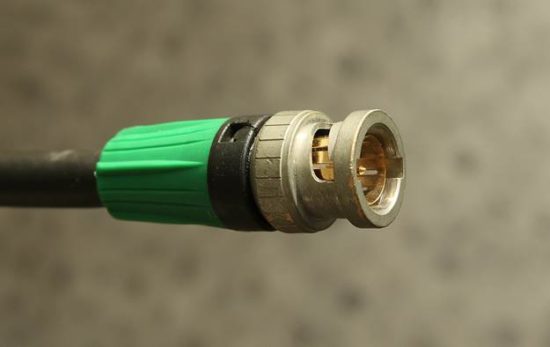Change is a constant for the NAB show, and its international counterpart IBC, because broadcast is an industry ruled by committees, standards, laws, regulations, and humans. Broadcast is based on semi-miraculous technologies: radio waves, television transmission, digital transmission, and now the Internet. It’s an industry whose practitioners engage in cut-throat competition enabled by cooperative alliances.

This year, at NAB, the industry is somewhere in the middle of a transformation that may look like just another network hardware transition, as SDI gives way to IP, except that nobody thinks that. We’re seeing the transformation of the entire industry. The serial digital interface, SDI, came along at the end of the 80s to enable the transition to digital. Since then, the definition has been pushed, pulled, and stretched to enable HD, UHD, higher frame rates, stereo 3D, and on and on.
At NAB this year, much of the discussion was around how much longer does SDI-based technology hang on. Industry watchers put the beginning of the end at around 2010 as streaming entertainment began to arrive. Obviously since then, the trend for over the top transmission (OTT) enabled by Internet Protocol (IP) has been picking up speed and as a result much of the discussion at NAB was not around if, but when. The success of Netflix at the Oscars has pretty much sealed the deal.
During a Cisco-sponsored discussion, Roger Crothers of the BBC described building a greenfield IP studio for BBC Wales in Cardiff. He said building plans moved quickly from going with SDI as the easy and less expensive choice to IP, because it seemed clear that if they went with SDI, they would have to transition to IP within the next four years or so. Staying with SDI is easy, and cheap, but it is not as adaptable, and as scalable as IP, which already underpins much of our entertainment feed today.
Crothers says he believes the BBC will be transitioning the other sites in Wales, and as they do, they’ll be able to easily share content and resources such as storage and bandwidth over IP. That, in a microcosm, is what the transition to IP will eventually be all about. IP will enable the little companies act like big companies and the big companies to achieve the kind of efficiencies that will give them the flexibility of small companies. Resources will flow along the networks like water in the delta.
For traditional broadcasters, the challenge is a financial one. Going to IP requires a changeout of equipment and so there is currently a divide between the enterprise-sized companies and small companies including local broadcast studios. Smaller organizations without a lot of ready cash may feel they have to stick with SDI for a while. On the other hand, startups may well go for IP for the same reason Crothers and his team did in Wales. If you’ve got a greenfield situation, why not leapfrog to what looks like the winning technology?
It’s also possible to opt for transitional technologies like NDI (network device interface) developed by NewTek in 2015 for its TriCaster portable broadcast product, which is an open standard and is being used to adapt to IP workflows allowing the combinations of SDI and IP. Vizrt’s decision to buy NewTek was influenced by NewTek’s strong role in helping companies transition to IP.
NewTek CTO Andrew Cross says that SDI came in as a solution to the challenge of competing interfaces and cables and it helped simplify the broadcast ecosystem as the digital transition first enabled standard definition video. Since then the new formats HP and 2K, 4K, etc., have all strained older interfaces and IP has been creeping in with transitions. For example, says Cross, cameras have their own IP connectivity; modern graphics systems are actually computer systems, production switches are increasingly IP. “These devices are already connected,” he says in a short video clip on NewTek’s site. The transition from SDI is the last step, and then he says, “IP is magic,” because it removes the friction and allows everything to start talking to everything. It makes the transitions much easier.
At the Cisco NAB talk, Dave Ward of Cisco said, what the goal has to be is that the engineers don’t have to change the way they work. He said, engineers don’t want to have to learn new technologies. It’s not only engineers, all over NAB we heard people decrying multiplying standards, and formats. “I don’t want another format,” one vendor told me who promised to kill me if I revealed his name. The confusion, he said is helping drive the shift to IP. However, we all already know how to use computers and that’s where this transition is taking us.
What do we think?
If the transition from paper to digital in publication is any indication, there are going to be some awful times ahead for smaller production houses who will find themselves competing against free when it comes to making and selling their content. We’re already seeing the telcos agonize and acquire as they try to figure out the transition to OTT. Now their competitors are Amazon, Microsoft, and Google.
The young woman who shows you how to match plaids, and the guy willing to dive into jello, are competing with Game of Thrones.





